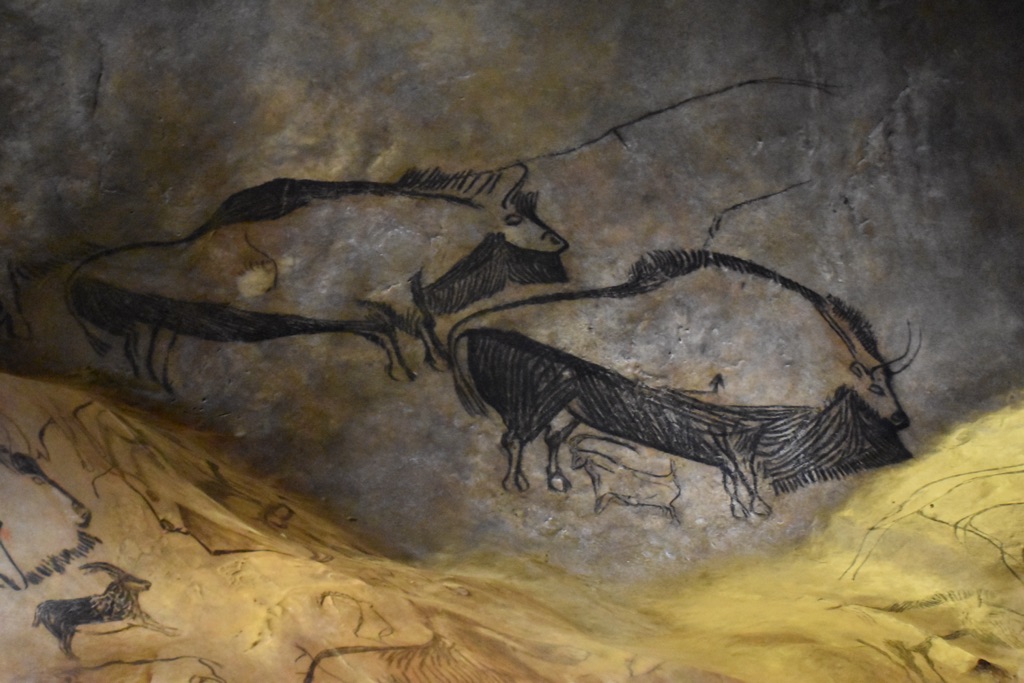The Grotte de Niaux is a cave in the French Pyrenees known for its prehistoric cave paintings. These artworks are remarkable examples of Paleolithic art, showcasing the skill and creativity of our ancestors. The cave is part of a larger network of caves in the region, which served as a canvas for ancient humans. The paintings, mainly of bison, horses, and ibex, have fascinated archaeologists and visitors alike. They offer a window into the lives and beliefs of people who lived over 14,000 years ago.
Get your dose of History via Email
Historical Background of Grotte de Niaux
The Grotte de Niaux’s discovery dates back to the early 20th century. Initially, locals knew about the cave, but its significance wasn’t recognized until later. The first scientific recognition of the cave’s paintings occurred in 1906. French prehistorian Henri Breuil played a pivotal role in studying the site. The cave’s art was created by the Magdalenian culture, known for their detailed and sophisticated cave paintings.
The Magdalenians were hunter-gatherers who thrived during the Upper Paleolithic period. They inhabited the cave and used it for various purposes, including as a space for art. The Grotte de Niaux stands out for its lack of habitation debris. This suggests the cave may have held a special purpose, possibly for ceremonial or ritualistic activities.
Over the years, the cave has seen various explorations and studies. These have provided insights into the techniques and materials used by the Magdalenians. The cave has also been the subject of preservation efforts. This is to protect the paintings from damage due to human interaction and natural decay.
The Grotte de Niaux has not been the scene of historically significant events in recent history. However, its value lies in the prehistoric period it represents. The cave’s art is a cultural treasure, offering a direct link to our distant past. It is a testament to the artistic expression and cultural practices of early humans.
Today, the Grotte de Niaux is a protected historical site. It is open to the public for educational tours. These tours allow visitors to witness the ancient artwork firsthand. The cave remains an important site for archaeological research and study. It continues to contribute to our understanding of prehistoric human life.
About Grotte de Niaux
The Grotte de Niaux is nestled in the Pyrenees mountains in southern France. It is part of a larger karst system. The cave extends over two kilometers, with several large chambers and galleries. The main chamber, known as the Salon Noir, houses the majority of the paintings.
The cave’s paintings are predominantly black, created using charcoal and manganese oxide. The artists applied the pigments directly onto the cave walls. They sometimes used their fingers or brushes made from animal hair. The images depict a variety of animals, with a focus on horses, bison, and ibex.
The cave’s interior is a natural marvel, with impressive geological formations. Stalactites and stalagmites adorn the cave, adding to its otherworldly atmosphere. The cave’s natural acoustics may have also played a role in its selection for artistic activities.
The Grotte de Niaux’s construction is a work of nature, not human engineering. The cave’s formation dates back to the Paleolithic era. Over time, water erosion and geological processes shaped the cave. This created the chambers and galleries we see today.
The cave’s preservation is a priority. Visitors must follow strict guidelines to minimize impact. The French government and heritage organizations closely monitor the cave’s condition. They ensure the longevity of this prehistoric masterpiece.
Theories and Interpretations
The purpose of the Grotte de Niaux’s paintings has been the subject of much speculation. Some theories suggest they had a spiritual or religious significance. Others propose they were part of hunting rituals or served as teaching tools for young hunters.
The mystery of the cave’s use is deepened by the absence of daily-life artifacts. This contrasts with other contemporary sites. It implies that the Grotte de Niaux had a specific, possibly sacred, function for its creators.
Interpretations of the paintings often match them to historical records of animal species from the period. This provides insights into the region’s environment and the Magdalenians’ way of life. The accuracy of the animal depictions speaks to the artists’ keen observational skills.
Dating the paintings has been carried out using radiocarbon dating methods. These confirm the art’s creation during the Magdalenian period. The dating contributes to a broader understanding of the timeline of human artistic development.
Despite extensive research, many aspects of the Grotte de Niaux remain enigmatic. The cave continues to be a focal point for archaeological studies. These aim to unravel the secrets of its past inhabitants and their artistic legacy.
At a glance
Country: France
Civilization: Magdalenian culture
Age: Over 14,000 years old (approximately 12,000 BC)
Conclusion and Sources
The Grotte de Niaux is a significant archaeological site. It provides invaluable insights into prehistoric art and human history. Its preservation and study are crucial for understanding our cultural heritage.
Reputable sources used in this article include:

